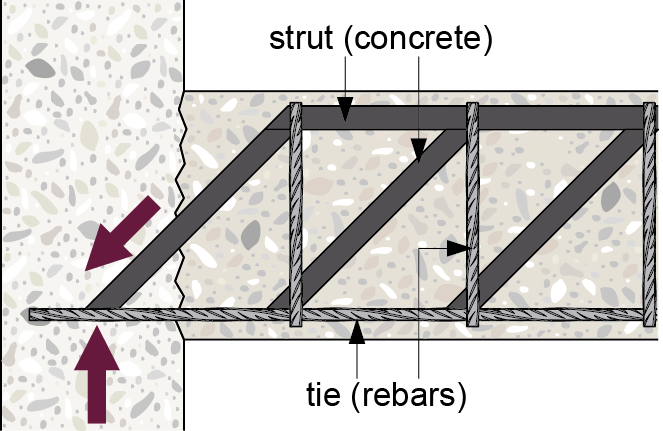
But you should design them differently. The main differences between the approaches for post-installed anchor and rebar connections

Since the mid-1970s, adhesive anchors have been used extensively in construction. Today, most projects require the installation of concrete-to-concrete or steel-to-concrete fixtures, which are often secured by post-installed injection mortars. These are specified during the design stage or are needed during the execution phase to improve jobsite efficiency or to correct installation errors.
Although some mortars might be suitable for both applications, others might not, and this is especially true for concrete-to-concrete extensions using post-installed rebars (reinforcing bars). As an example, systems that may be otherwise appropriate for anchoring applications (i.e. anchor plate connections that combine anchor rods with either adhesive or mechanical fixing systems) will not necessarily fulfill the requirements for rebars (i.e. new-to-old concrete connections using post-installed reinforcing bars with adhesive systems), which typically require a deeper embedment compared with that required to fasten a steel plate.
In addition, the regulatory framework covering anchor and rebar is based on different theoretical principles, design approaches and qualification processes: just calculating the embedment depth of the rebar as an anchor (possible to a certain extent, since rebars can be qualified as a steel element for anchoring applications) might not be in line with the code utilised in the concrete design (e.g. brittle failure modes are not accepted). We explain this briefly below.
Difference 1: Theoretical principles
As definitions go, anchor theory covers both single anchor fixed points and anchor groups in steel anchor plate fixtures (both by means of mechanical and chemical anchors), while rebar theory is the discipline used for concrete member connections through post-installed reinforcement bars and adhesive.

Different applications, different rules: Anchor theory is for steel-to-concrete connections, while rebar theory applies to concrete extensions
Using this anchor theory, the load from a steel member (either a beam or a column) is transferred to the concrete structure – through an anchor plate that is fixed to the concrete – using an anchor bolt fixing in a steel anchor plate connection. The steel elements of the fixing (threaded rods in the case of adhesives) transfer the load to the existing concrete element through either tensile load or shear load, or a combination of both. Leveraging the concrete’s inherent tensile strength is essential for the fixing to resist the load. It means that the brittle concrete cone failure is accepted and accounted for in the design, unless there are special requirements arising from the adopted design code; an example of this is in seismic conditions, where the requirement of ductility might be essential.

Brittle concrete cone is accepted in the anchor theory
According to the rebar theory however, the load is transferred to the concrete in the same way as with a cast-in reinforcement bar. Therefore, post-installed rebars are not generally designed to resist direct shear loading in the same way as an anchor bolt. The forces are defined through a strut-and-tie model, which presupposes that the rebar only resists axial loads to guarantee equilibrium with global concrete struts. The connection interface needs to be properly roughened to ensure the shear load is transferred by friction.

In the rebar theory, connections are designed through strut-and-tie modeling
In the case of a splice (or overlap) connection, the load is transferred through a local strut-tie mechanism in the same way as with a cast-in non-contact reinforcement bar splice.

The local strut-tie mechanism in a non-contact rebar splice
The brittle concrete failure mode is prevented by means of global or local compressive struts; therefore, international reinforced concrete code design rules do not consider the concrete’s tensile capacity and expect all tensile forces to be resisted by rebars.
Difference 2: Qualification procedure
Whether you design a post-installed steel-to-concrete or concrete-to-concrete connection, in both cases you should rely on qualified systems that are consistent with the regulatory framework adopted for the project (i.e. ETA document in AS 5216 or AS 3600 - based design). Both design theories are supported by different qualification procedures in line with the application conditions covered in the approval (e.g. static, seismic).
For example, when it comes to assessing an adhesive mortar to be used in post-installed concrete connections, the strategy adopted by most international standards focuses on comparing the behavior of the post-installed system with that expected in cast-in applications. Here, the right combination between the bond strength and stiffness characteristics of the suitable systems is important. However, the codes do not apply this philosophy in the qualification processes for anchoring applications.
Difference 3: The design approach
When designing a post-installed anchor group, the design capacity of the selected layout is calculated (see: anchor failure mode under tension and for shear loads ) and then compared with the design load, in an approach such as normal structural design according to limit state principles. PROFIS Anchor is a valuable aid for carrying out your design in accordance the most widespread international and domestic anchor codes and certain Hilti methods.
For post-installed rebar connections, the outcome of the calculation is the anchorage length for simply supported and moment connections, or lap length for splice connections, which follow similar rules to cast-in reinforcement. You can use PROFIS Rebar in your concrete extension design according to AS 3600 and other acknowledged standards and Hilti method (extension of AS 3600 approach based on Hilti research and testing).

Summary of the main differences between anchor and rebar theory
Conclusions
It's quite simple – adopting the right principle in your design strategy for the relevant connection type is the first rule for accurately modelling the expected behaviour. Leave your enquiries in the comments or consult our guidelines in the Engineering Section of our corporate website.

